KZ ZA12
Beautiful Design, But Disappointing Sound
The KZ ZA12 is a visually stunning IEM with a beautiful shell that immediately grabs attention. Internally it has a nice hybrid configuration of 2xDD and 4xBA’s. Priced in the mid-range of KZ’s offerings, it also comes with tuning switches that also promise customization for different sound preferences.
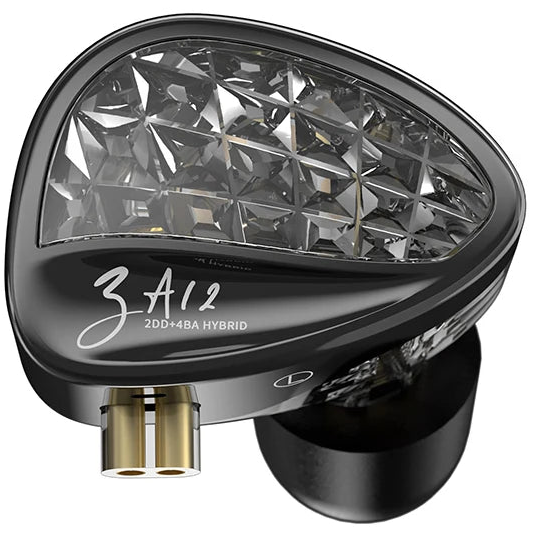
Note: I would like to thank KeepHifi for providing the KZ ZA12 for the purposes of this review.
If you want to check out more details about the KZ ZA12. Here is a non-affiliated link to their product page.
There are a few variations available either with or without the tuning switches or a microphone and ranging in price depending on the variation from $58 to $65.
I had high hopes for the ZA12, as one of the first IEMs I reviewed this year and especially when I unboxed it and checked out the build quality of the shell. And since I am also a sucker for tweaking audio with tuning switches so this IEM seemed like it would be perfect but as you will see there are some aspects of the ZA12 that were just not for me.
But as always, I would encourage people to try various IEM’s and sound signatures and the ZA12 might still be the perfect you might like, so read on find out what you can expect.
But first lets get into that unboxing experience.
Unboxing Experience
The unboxing experience for the KZ ZA12 is straightforward and functional, typical of KZ’s packaging style:
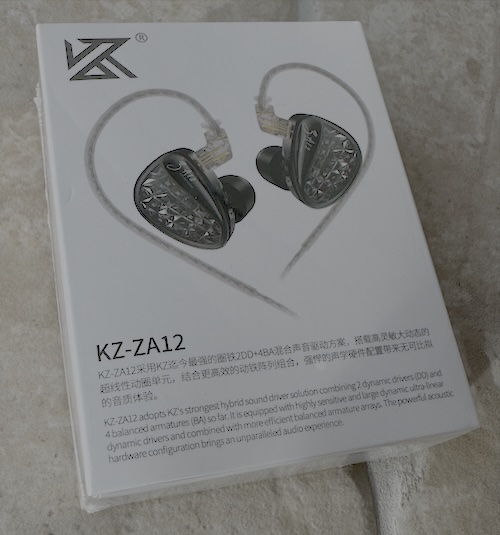
On the back of the box you the specifications:

Removing the box from the sleeve reveals the ZA12’s:
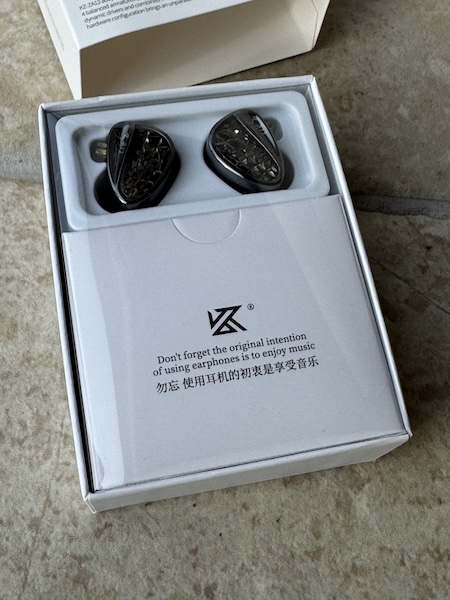
And they really are the star of the show with a gorgeous see through shell:
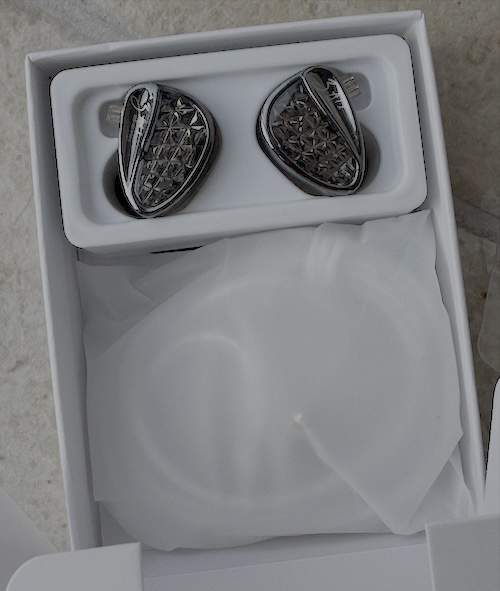
Taking all the contents out of the box:
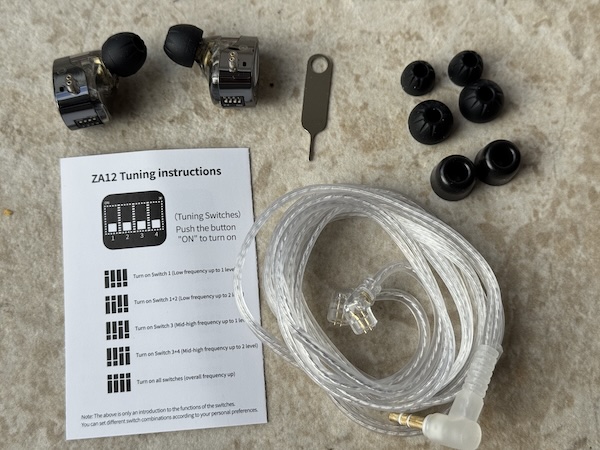
- The ZA12 IEM shells
- A detachable cable with a standard 2-pin connector
- Three pairs of silicone eartips (S/M/L) and a pair of foam eartips
- A simple user manual.
The packaging does its job, but the focus here is clearly on the IEMs themselves, which look gorgeous with their translucent shells and intricate internal design.
Design, Build Quality, and Comfort
The KZ ZA12 is a beautifully crafted IEM with a premium-looking shell that combines aesthetics with durability.
Tuning Switches
I am a sucker for tweaking the sound of IEMs and do love to hear the differences tuning switches but I will
describe the sound you can expect from these switches later in the review:

There is a sheet provided with details of how each switch affects the sound signature:
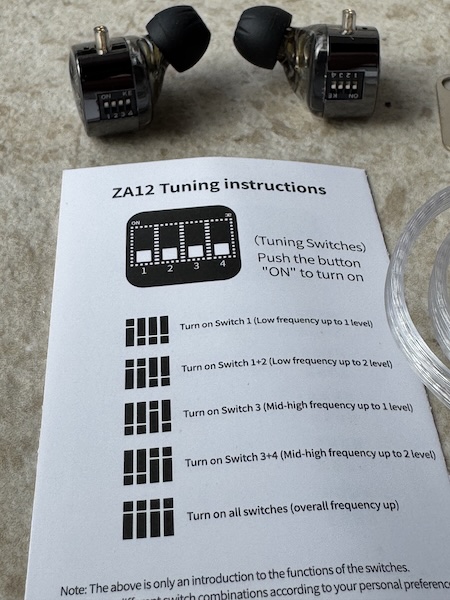
Basically the 2 on the right can tune the bass to different levels and the 2 of the left will tune the treble. The default sound signature is basically when all are up, so lowering them either lowers the bass or the lower treble depending on which pairs of tuning switches you lower. This would be amazing configuration if say the default sound signature was more ‘Harman’ as I might actually lower the bass slightly to my preference and possible also lower the treble but as you will see the default sound signature is very treble focused.
Shell design
The design showcases a semi-transparent body, allowing a glimpse of the drivers inside:

I always think that a clear shell adds a sense of sophistication to the overall look where you can see the internals easily:
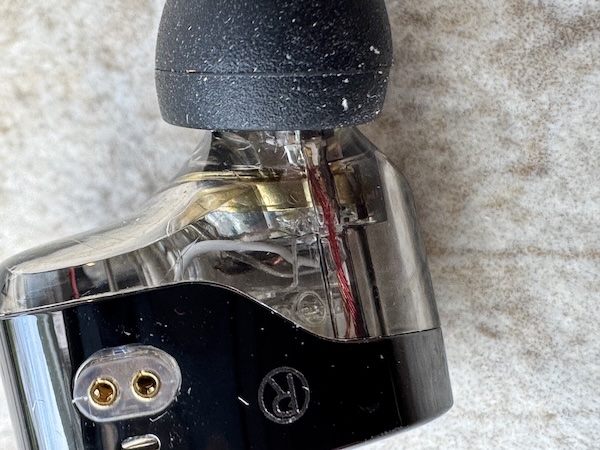 |
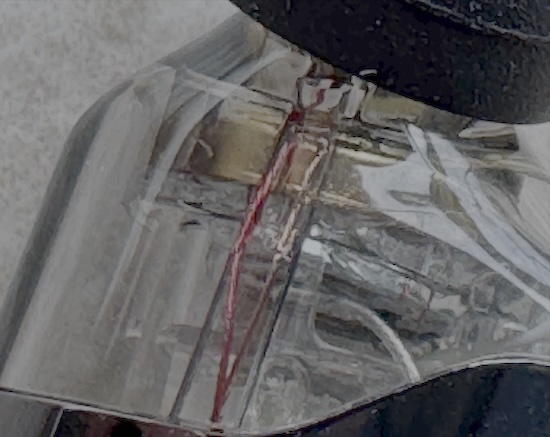 |
Comfort
The ZA12 is extremely comfortable for extended listening sessions, with an ergonomic shape that fits well in my ears. The stock silicone eartips provide a decent seal, the extra provided foam tips work well but as with many IEMs, experimenting with aftermarket eartips can provide some subtle enhancements to the fit, sound isolation and sound signature.
The Nozzle is fairly large, but I think it should still be very comfortable for most people:

To get an idea of the size of the nozzle and shell, here is a short video comparison with Truthear Zero Red, Moondrop Chu II and the KBear KB02:
Cable
The included detachable 2-pin cable is of decent quality in this price range, though it feels somewhat basic
compared to the premium appearance of the IEMs.
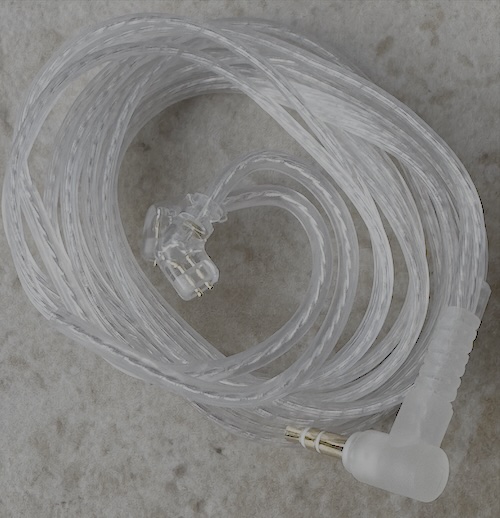
Fortunately, the 2-pin connection allows for easy cable upgrades if you want to swap.
Sound Impressions
While the ZA12 excels in design, its sound signature is a major letdown for me. The overall tuning is V-shaped but with extra treble emphasis that can make listening a little fatiguing over time but will initially sound pretty detailed. The tuning switches, which provide some customization options only slightly balance the overall sound signature, but for those interested I felt the UUDD worked the best for me but still not that balanced but these impressions below are with these UUDD configuration.
Bass
The bass is good but not particularly noteworthy. It has decent extension into the sub-bass but lacks the impact and texture that would make it stand out. 2 of the tuning switches affect the bass making it sound more neutral but overall the bass mostly feels somewhat overshadowed.
Test Tracks:
- “Billie Eilish – Bad Guy”: The bassline is present but lacks the punch and fullness that make the track engaging.
- “Hans Zimmer – Time”: The sub-bass rumble is decent but not as immersive as I would have liked.
Midrange
The midrange is clear and detailed, with good vocal presence. However, it feels slightly recessed compared to the elevated treble, which can cause some imbalance in the overall sound.
Test Tracks:
- “Adele – Someone Like You”: Vocals are clear but lack the warmth and body needed for a more emotional connection.
- “Fleetwood Mac – Landslide”: The acoustic instruments are rendered well, but they can sound slightly thin due to the treble emphasis.
Treble
The treble is where the ZA12 falters the most. It is overly emphasized and can sound harsh, particularly on tracks with bright or sibilant elements. And the 2 tuning switches aimed at changing the treble only slightly decrease the treble, which in my opinion detracts from the listening experience. But this type of tuning can sound extremely detailed with some tracks, so might be an interesting option to have in an IEM collection to hear something you have not heard with other IEMs.
Test Tracks:
- “Vivaldi – Four Seasons: Spring”: The violins sound overly sharp and fatiguing.
- “Daft Punk – Contact”: High-frequency details are present but overly aggressive.
Soundstage and Imaging
The soundstage is average, with a moderate sense of width and depth. Imaging is decent, with clear instrument separation, but it’s not enough to compensate for the treble-heavy tuning.
Specifications and Measurements
| Specification | Details |
|---|---|
| Driver Configuration | 4BA + 2DD (10mm + 8mm DD) |
| Impedance | 45Ω |
| Sensitivity | 103dB |
| Frequency Range | 20Hz–40kHz |
| Cable Type | Detachable 2-pin |
| Weight | Lightweight |
| Extras | 4 x Tuning switches |
Measurements:
Note: The following measurements were taken with my 711 clone coupler. They are available on my measurement database: here
Frequency Response
The frequency response measurements show a significant treble peak, which aligns with my subjective impressions. The effect of the switches can be also seen in this comparison with the default UUUU configuration compared with the slightly more balanced UUDD configuration which was my favourite:
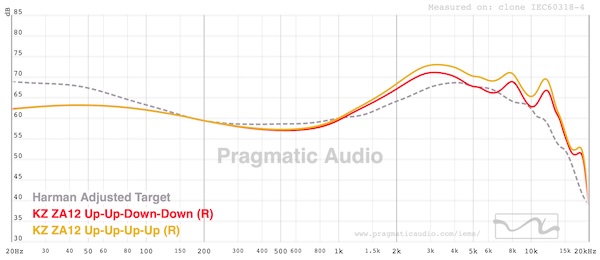
The bass and mids are reasonably well-balanced, but the treble peak dominates, making the overall sound signature fatiguing even with the treble reduced a little with the switches.
Distortion
Distortion levels are low:
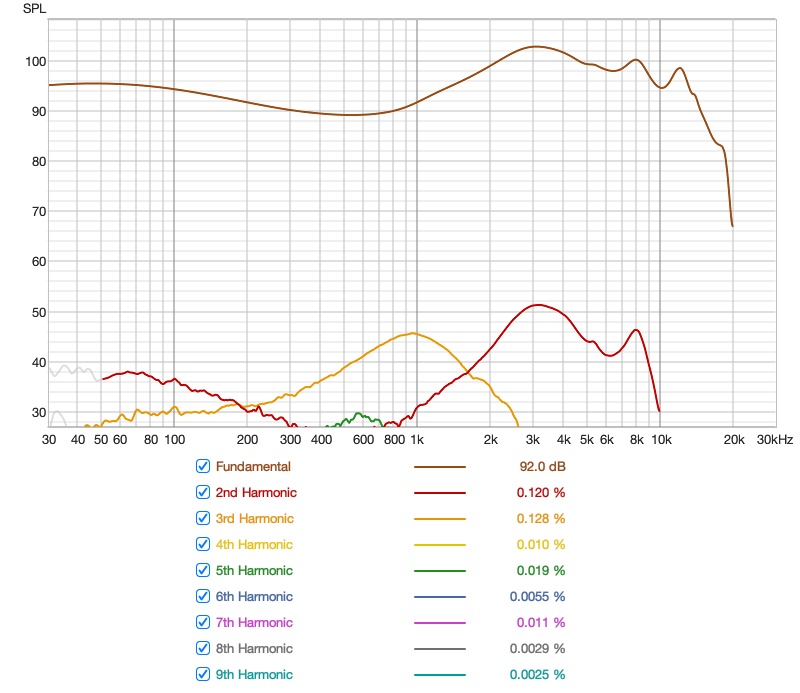
And as a percentage it is still very low showing a slight little increase in the treble:
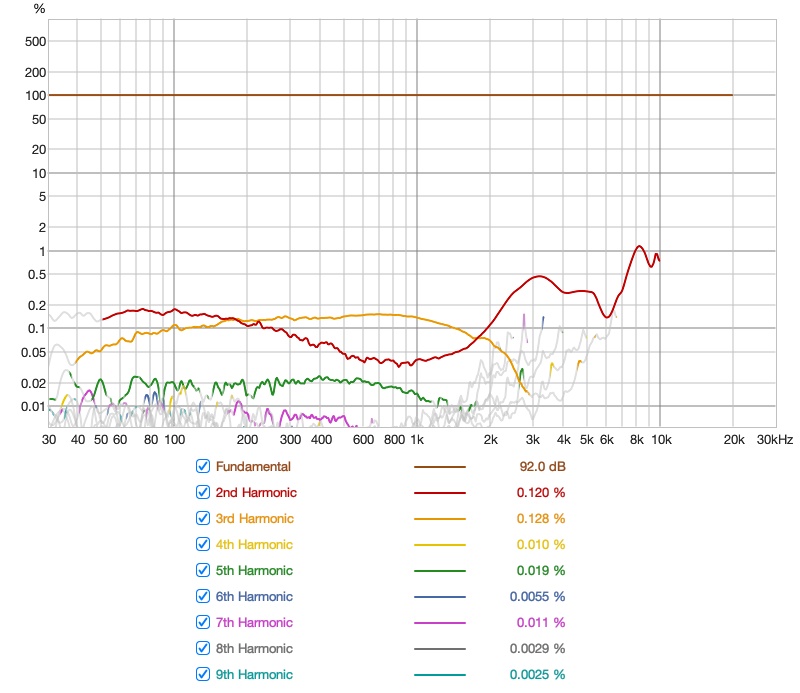
Tuning Switches
Here is a comparison of some of the tuning switches to give you an idea of how they affect the sound:
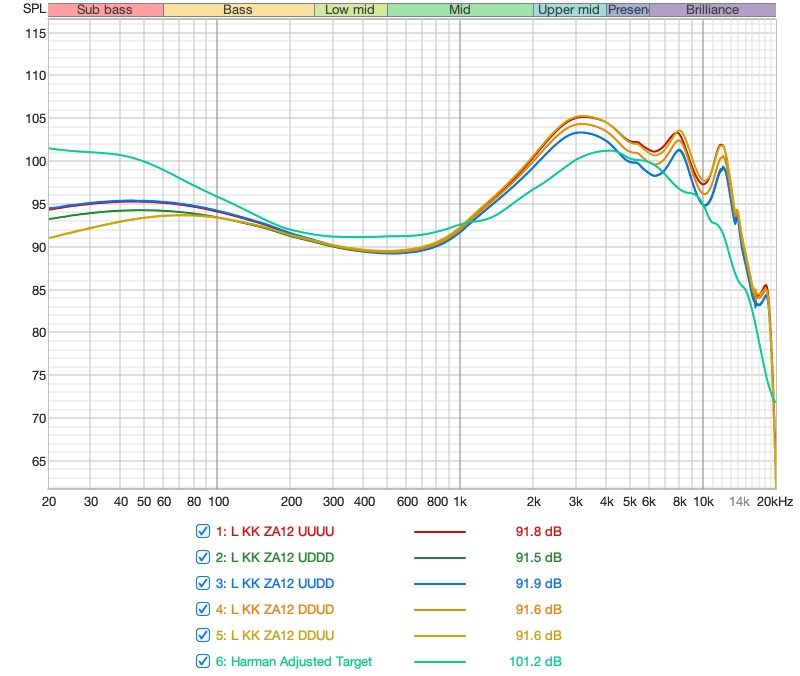
From the above graph you can see that it is best to keep the bass switches up and the treble ones down.
EQ Recommendation and some comparisons
I do love various sound signatures and I believe everyone should own a few different IEM’s with different sound signatures, it is one of the great pleasures of current price of amazing IEMs that you can have at least one with a Harman tuning, a new Meta tuning, a V-Shaped tuning, a Midrange focused IEM and a Bass ‘monster’.
So I guess without EQ the question is do you want a treble focused IEM? If not you can still very easily EQ the ZA12 let me show you:
But I struggled to find some other IEM’s that I have reviewed that focused on the treble, here are a few:

But even these the ZA12 has the most treble with the best switches setting.
And then comparing with some recent popular IEMs you can see that ear gain region has way too much treble:

So, I think the major problem with the sound signature of the ZA12 is the ’tilt’ and one very simple way to EQ away this tilt would be with a Hiby device like the R1 that I recently reviewed with effectively has a ’tilt’ built into its MSEB EQ tool.
But using standard PEQ even just using 2 PEQ filters can effectively transform this IEM
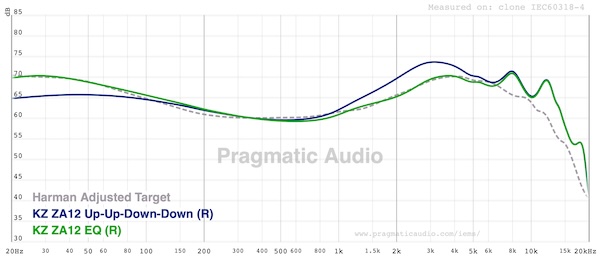
This EQ is effectively continues the good work of the tuning switches by increasing the sub-bass a little more and decreasing the ear gain region of the treble to ‘harman’ levels:
Preamp: -5.1 dB
Filter 1: ON PK Fc 24 Hz Gain 5.1 dB Q 0.500
Filter 2: ON PK Fc 2400 Hz Gain -4.9 dB Q 0.900
With this EQ in place (and it really is just 2 very simple filters) you can have a very nice listening experience with a very nice looking IEM.
Rating
I have given the ZA12 a pragmatic rating of 3 stars, while I liked design, the comfort of the shell and the cable is decent for the price but its sound signature left me underwhelmed, especially given the tuning switches I was hoping I could tame that treble but unfortunately while the 2 treble switches help with the in balance of the sound it is still a very treble focused IEM. But with some simple EQ tweaks you can easily tame this “treble monster” and have gorgeous looking IEM that then sounds excellent.
Conclusion
The KZ ZA12 is a beautifully designed IEM with a lot of potential, but its overly treble-heavy sound signature makes it difficult to recommend without some EQ adjustments. While the tuning switches and multi-driver setup are appealing features, they ultimately fail to deliver a balanced and enjoyable listening experience.
If you are someone who enjoys a bright sound signature or doesn’t mind some EQ tweaking, the ZA12 is still worth considering. However, for those seeking a more balanced or bass-forward sound, there are better options in this price range.